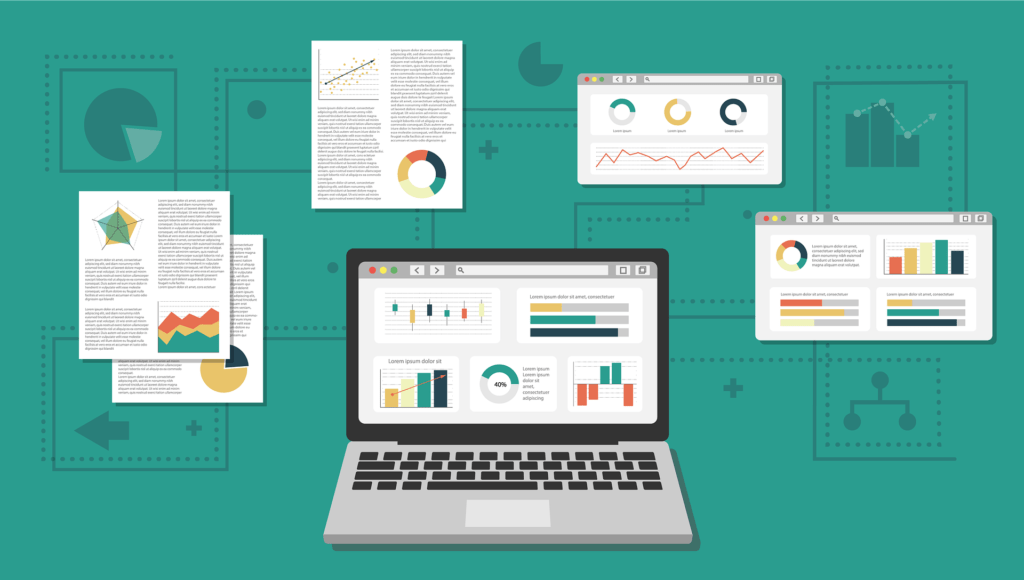Earlier this month, I followed the Tableau Visual Analytics training (TVA in short). TVA is a live virtual training that helps you discover the science behind the art of visualising data. In this blog, I will share some of my experiences from the time I spent learning both during and outside of the training.
First, let me start with the summary, provided by Tableau themself. In Tableau Visual Analytics (TVA), you’ll
“[…] learn which types of visualizations are best suited for different kinds of data, and the most effective ways to display your data insights in Tableau. Just as importantly, you’ll learn to avoid pitfalls that can result in misleading data presentation.”
Tableau website
Below, I will explain how I experienced the TVA training in the form of Simon Sinek’s golden circle: why, how and what. Why did I want to follow the training (and why you might too)? How did the training help me reach this goal? And what are some of the more practical aspects to consider if you want to follow this training too.
Why Tableau Visual Analytics
Hardly a (working) day goes by without me opening Tableau to create visualisations and build dashboards. So, it makes sense to want to become better and better each day and learn more about the reasoning behind it. But, even though Tableau is used as the platform for the (online) classes and the homework, this isn’t just for Tableau users per se. The content of the training is much more broadly applicable, in data visualisation and even visual communication.
The training is first and foremost about why data visualisation is such a powerful tool to convey a message or simply get some information across. It is, in its essence, more about how the brain responds to different visual cues. We are both biologically and socially wired to see patterns and make assumptions about what these patterns mean. TVA helps you get a grasp of which patterns lead to which assumptions and how to reduce cognitive load. In other words: TVA gives you scientifically proven methods on the best (and worst) ways to reach your audience for any given data type.

How
During the lessons, the trainer provides theoretical background following the topics and chapters in the course manual. Most of the time, the theory is accompanied by a practical demonstration of why some visualisation types are better suited for specific data types than others. The trainer also provides extra study material outside of, to paint the broader picture and get the theory across.
Each student or participant is encouraged to participate pro-actively. This means making suggestions, and asking questions whenever necessary, both during the courses and afterwards. At the end of each lesson, there is some homework to be done. The homework consists of a couple of short videos, (further) explaining specific theoretical concepts, as well as some hands-on practice in the form of Tableau dashboards and visualisations. These either needed to be built from scratch, or revised according to best practices discussed in class. Results are presented (on a voluntary basis) and discussed in class the next day, in order to receive feedback on your work and learn to give feedback on other participant’s visualisations.

What
The Tableau Visual Analytics training I took was a five day online course (from Monday to Friday) with each day consisting of a two and a half hour session with a ten minute break in between. The possibility also exists to complete the course in two full days. New courses start almost weekly, so you should find a period that suits your schedule fairly easily. Provided you can spare the time during the week, of course.
From my knowledge of the course, the training can be given in the physical space as well as virtually. My course was conducted online using Zoom, which worked very well. There were ten participants in my class, from all parts of the world, eight of whom finished the training. Attendance is registered on Trailhead Academy (where you purchase the program) in order to complete the training.
Prior to the training, each candidate receives all the documents and files needed for the training. A course outline handbook with all the theory, a list of URLs to interesting web pages, videos and literature, a folder with Tableau starter workbooks, and workbooks with the possible solutions. Throughout the training, the trainer also provides extra information and study materials.
Some hands-on experience with Tableau is advised to be able to focus on the theory while (re)creating dashboards and visualisations. But other than that, the course is available for anyone interested. I too would advise getting the Tableau basics down before diving into this training. The training is included in the 90-day Tableau Training Pass, if you have it. Otherwise, unless there are some Tableau partner arrangements in place, the training will cost 1400 euros.
Final thoughts on Tableau Visual Analytics
The Tableau Visual Analytics training is a very interesting course for anyone interested in data visualisation, as it teaches you the scientific concepts that make visualisations such a powerful tool to present data. My trainer was very friendly and patient, and truly knew what he was doing in Tableau. I do recommend gaining some visualisation experience first before diving into the topics. This ensures that you can spend your energy thinking about the theory, not about practical difficulties.
I hope this blog will give you some idea about whether or not you should follow the training. Do you want to know more about the concepts in the training? I wrote a blog about why we visualise data in the first place (be warned: there are tigers!). There is also a collective of other blogs (1, 2, 3) exploring the different visualisation types and techniques and how (not) to use them effectively. Furthermore, I built some dashboards on Tableau Public. Here the theory is visualised and broken down into practical do’s and don’ts.
Check out our blogs page to view more blogs on Tableau, Alteryx and Snowflake.
Work together with one of our consultants and maximise the effects of your data.
Contact us, and we’ll help you right away.


